Yosemite Park
Yosemite is a national park in the Sierra Nevada Mountains, near the border of California and Nevada.
The reader probably has heard of Yellowstone — a park with geysers that is about to erupt and finally destroy America. Yosemite also starts with the letter “Y,” but it’s much closer to San Francisco, so it attracts even more tourists — a whole 5 million people each year. And there are no geysers in Yosemite, only mountains.
It’s only a 3-hour drive from San Francisco to Yosemite. The road exits the city, crosses a bridge through Oakland, and very soon there is no trace of the metropolis left.

America is transforming once again.

Now, along the single-lane road for miles around, you can see vineyards, apple trees, and orange trees growing.

By the way, the oranges turned out to be all sprayed with some white substance. Later, they will be washed and sent to the store labeled as “Without GMO.”
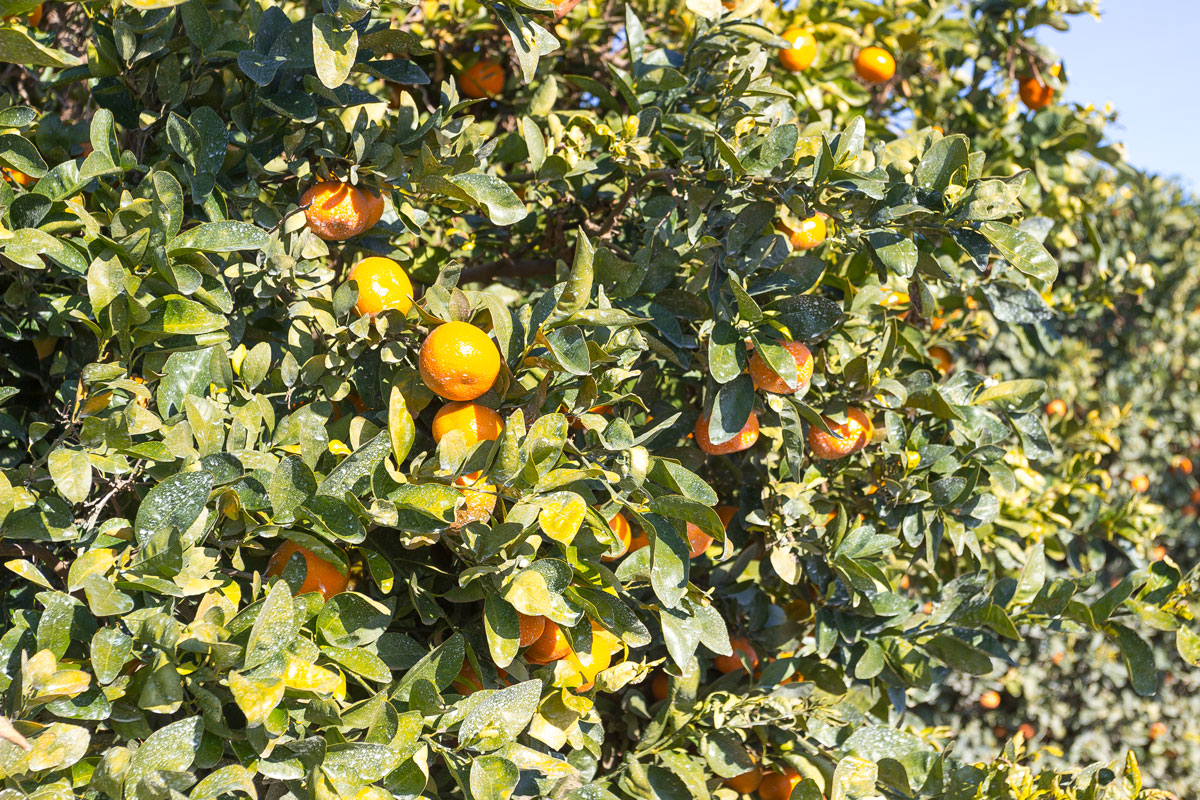
A completely stereotypical American ranch with a windmill.

Bus stop.

The landscape doesn’t linger for long. After an hour of travel, it changes again and transitions into mountains.
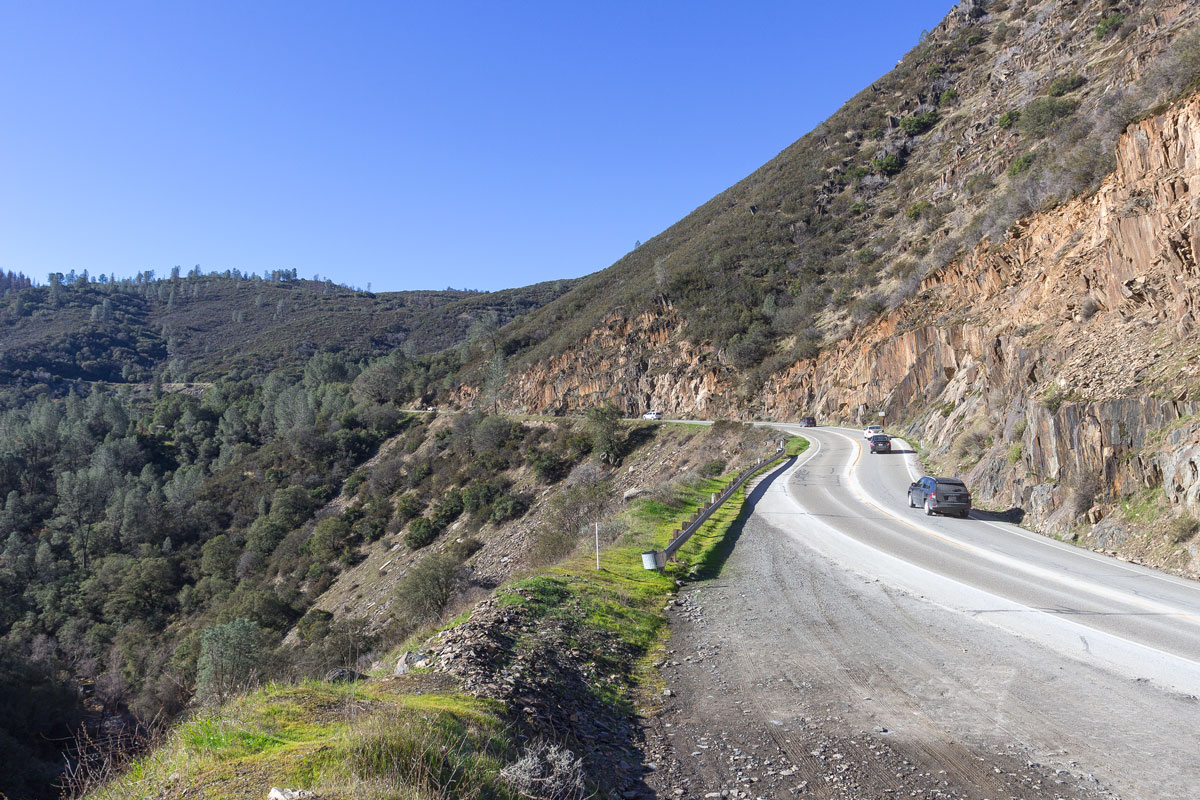
Gradually, the mountains enclose and form a ring around the road. Yes, this is also the USA, just a two-hour drive from San Francisco.

Just a little further from here, and you’ll reach Yosemite.
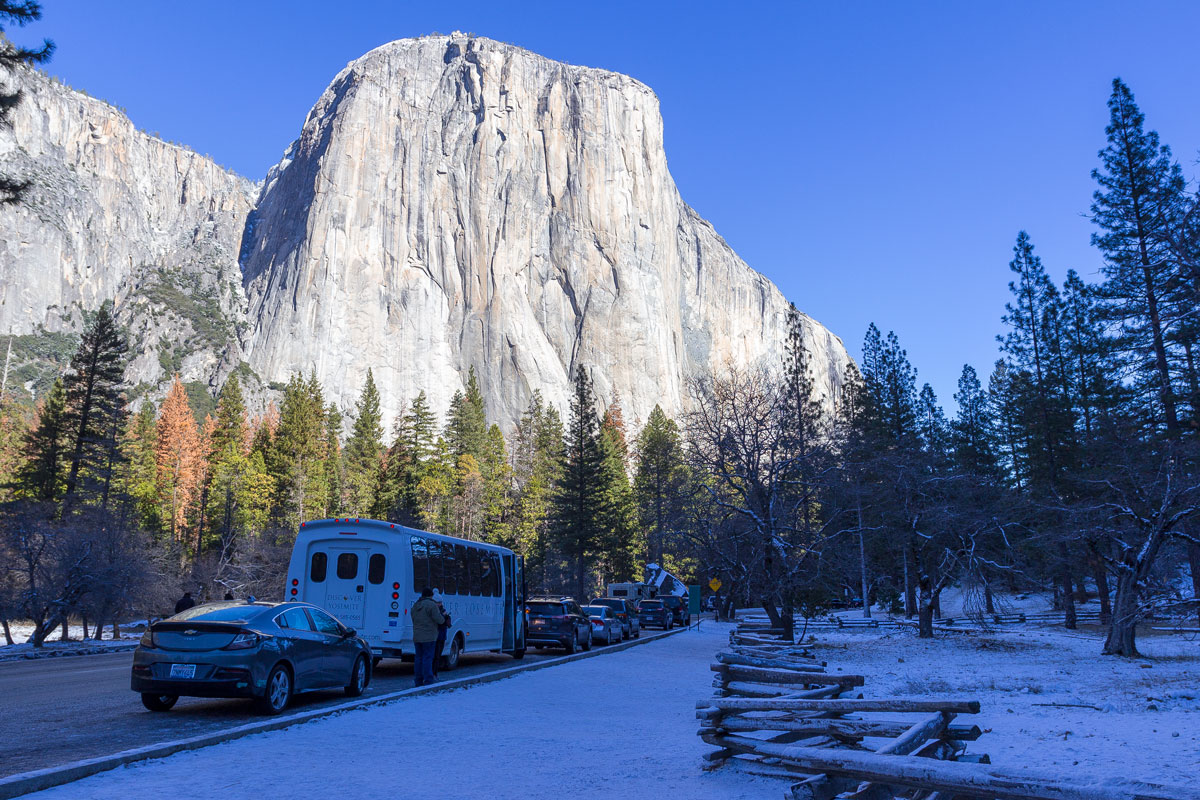
The main peak in the park is El Capitan.

El Capitan is a gigantic granite monolith formed 100 million years ago.
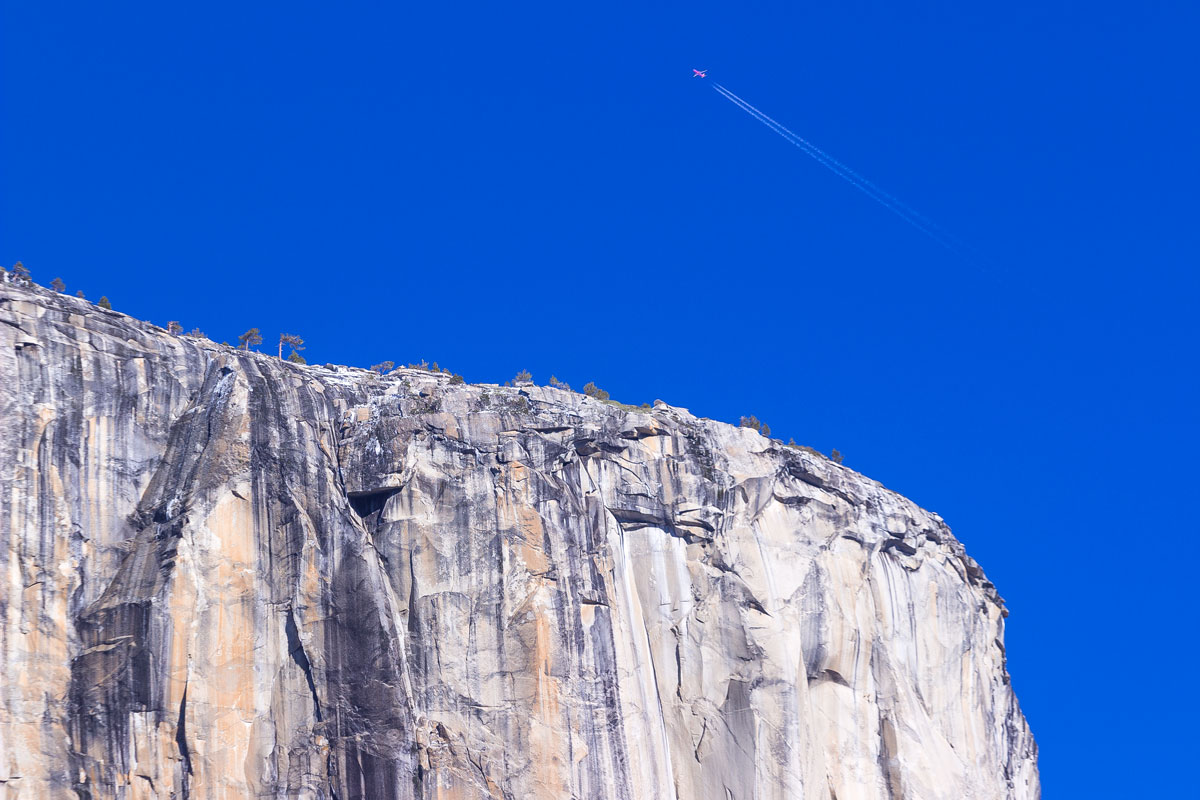
The tall sequoias of Yosemite turn into a light fuzz on the top of El Capitan. The mountain has a height of 900 meters.

An observant reader should have noticed the snow in the photos. Yes, damn it! In San Francisco, it’s +15 Celsius and sunny, but three hours away in Yosemite, the temperature is -3, and everything is covered in snow.

No, it’s not eternal winter here. Snow only stays in Yosemite for a couple of months, and in the summer, it’s about 10 degrees cooler here compared to the city. But how unbelievably cool it is—to leave the hot San Jose or sunny San Francisco and, in just three hours, arrive in a completely different season!

Winter in Yosemite is breathtaking.

It’s a pity that Russia doesn’t have winter.
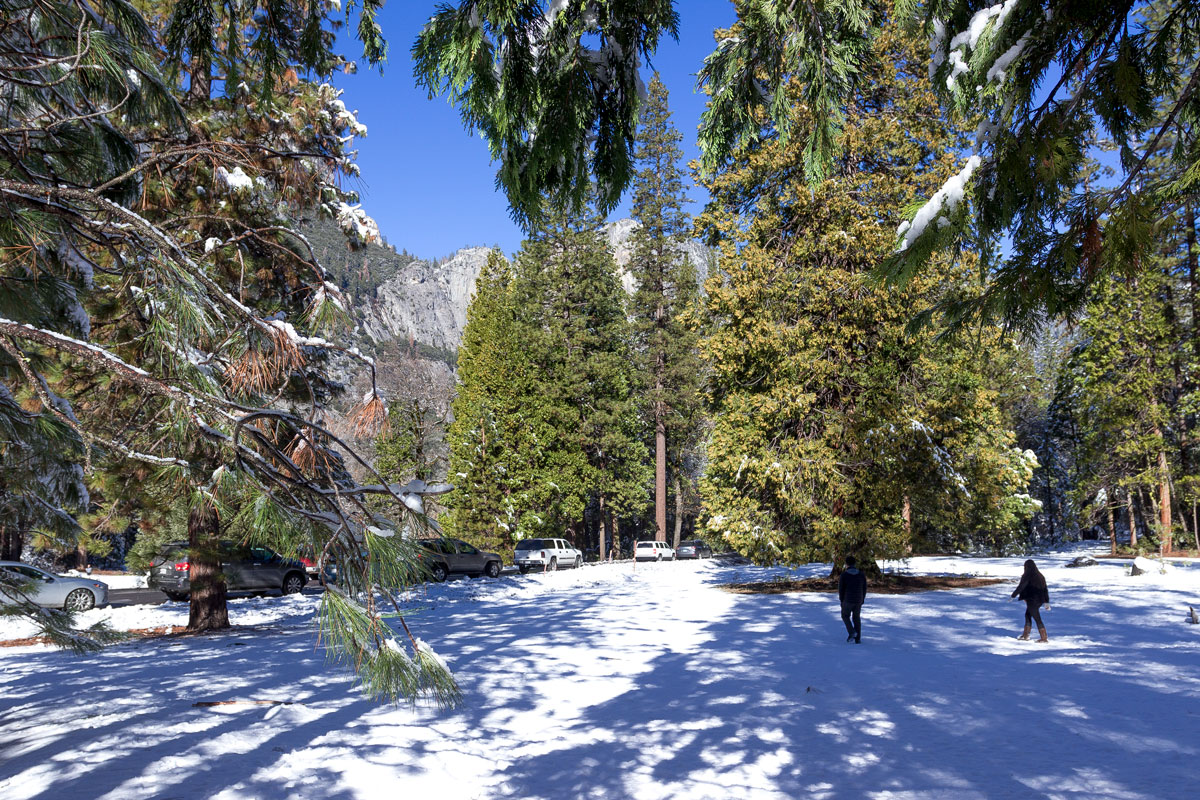
I have probably traveled poorly around my own country, but I have never seen such beauty anywhere there.

And even if I did find something, it would probably be somewhere in the Urals or the Caucasus. It seems that there are some caves near Starytsya, just three hours from my home, but we can’t find the same beauty as in the USA within walking distance here.

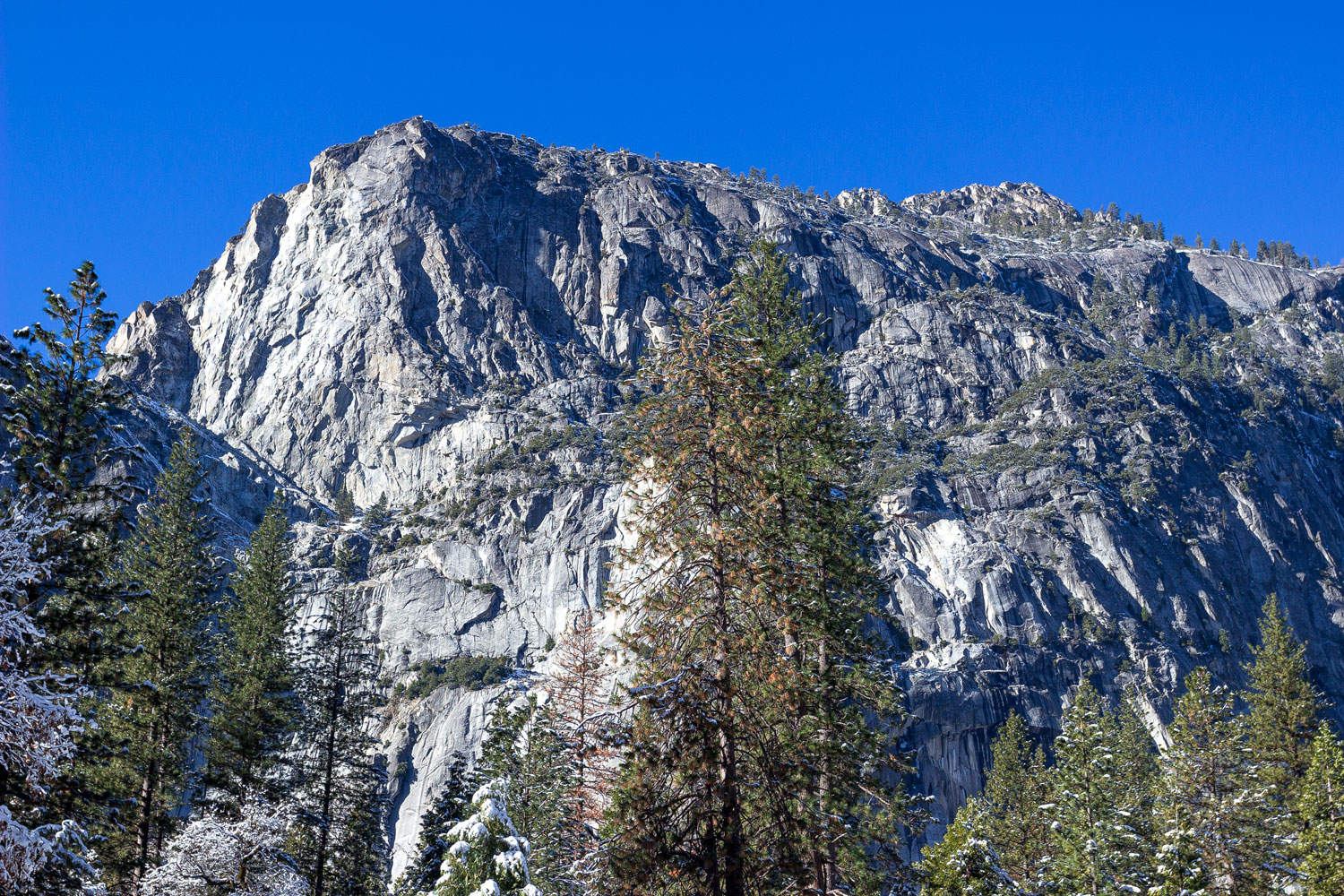
Yosemite is a unique natural zone, home to over 400 species of plants. For instance, there’s the yellow Oregon pine.
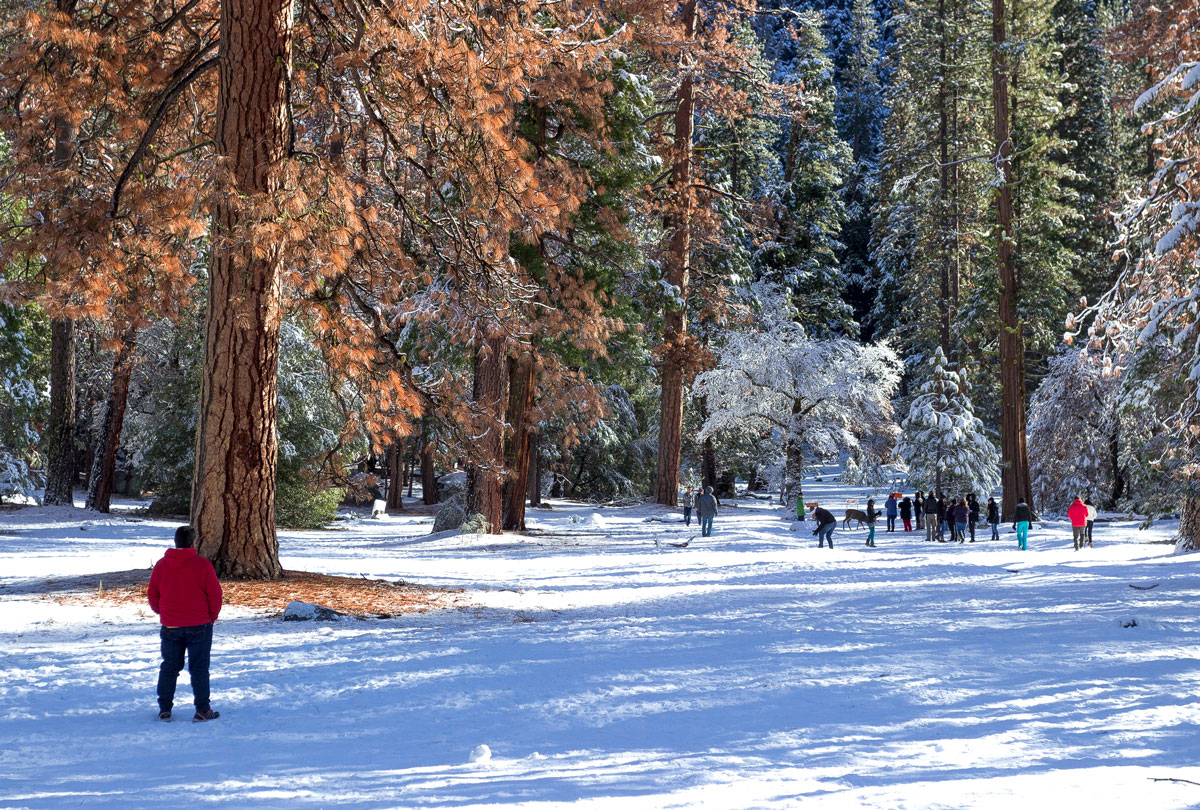
The needles of the Oregon pine are long, slightly curved, vividly yellow-green, and clustered in bundles at the ends of branches.

On the sides of the needles, the white stomatal lines are clearly visible, and the edges are finely toothed. The tips of the needles taper to a point or narrow significantly. The sheath measures 1.5-3 cm and has a consistent base.
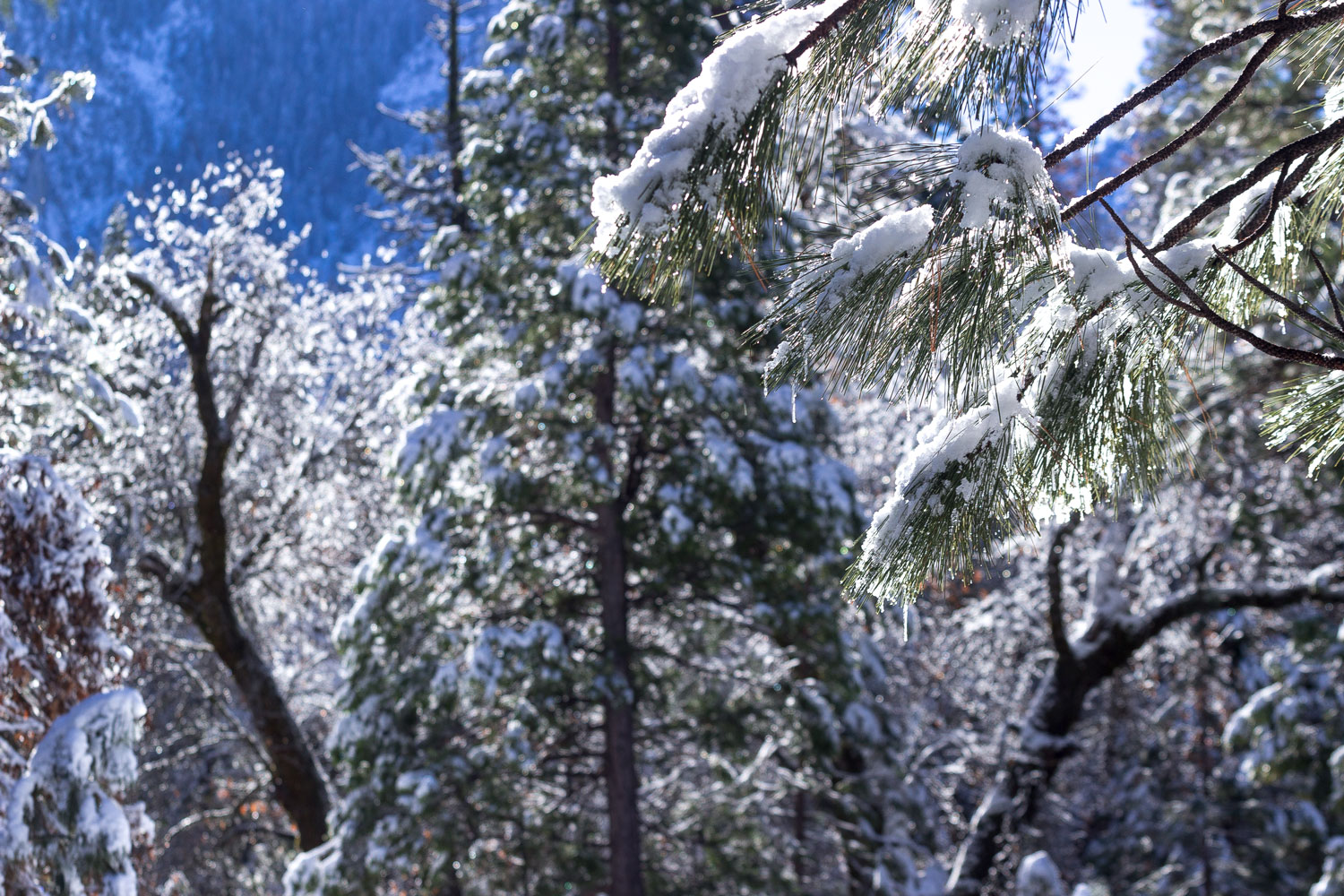
Yes, I also didn’t understand how botany could be interesting until I visited Yosemite.
Yosemite can be endlessly admired. The park is beautiful on all scales. Here are some small fir trees.
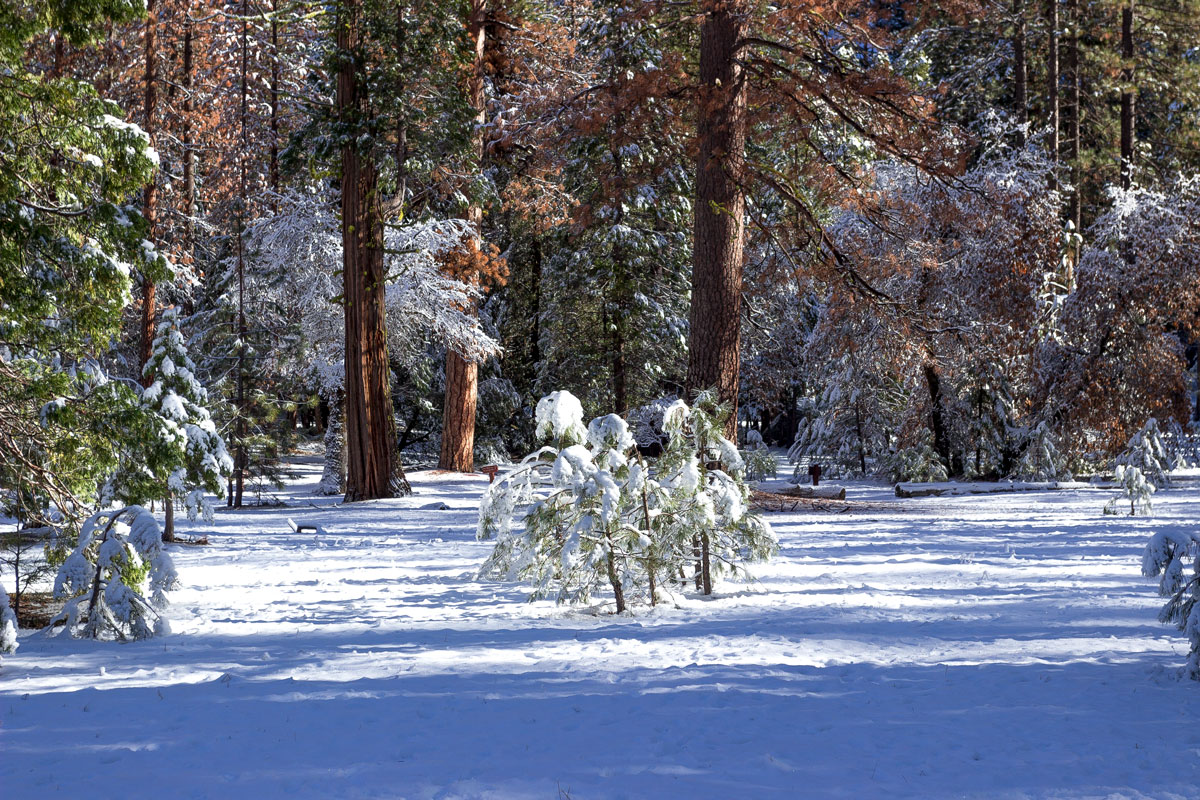
Here are some large spruce trees. The best specialists from Hollywood were hired to ensure proper snow placement on the trees.

One remarkable thing about America is its roads. One might think that where there are roads, it should be dirty and dusty. But here, the road seems like a part of untouched nature. It’s all thanks to the color of the asphalt—black instead of gray—along with yellow markings, brown trees, and fences. The color palette in America is perfectly chosen.
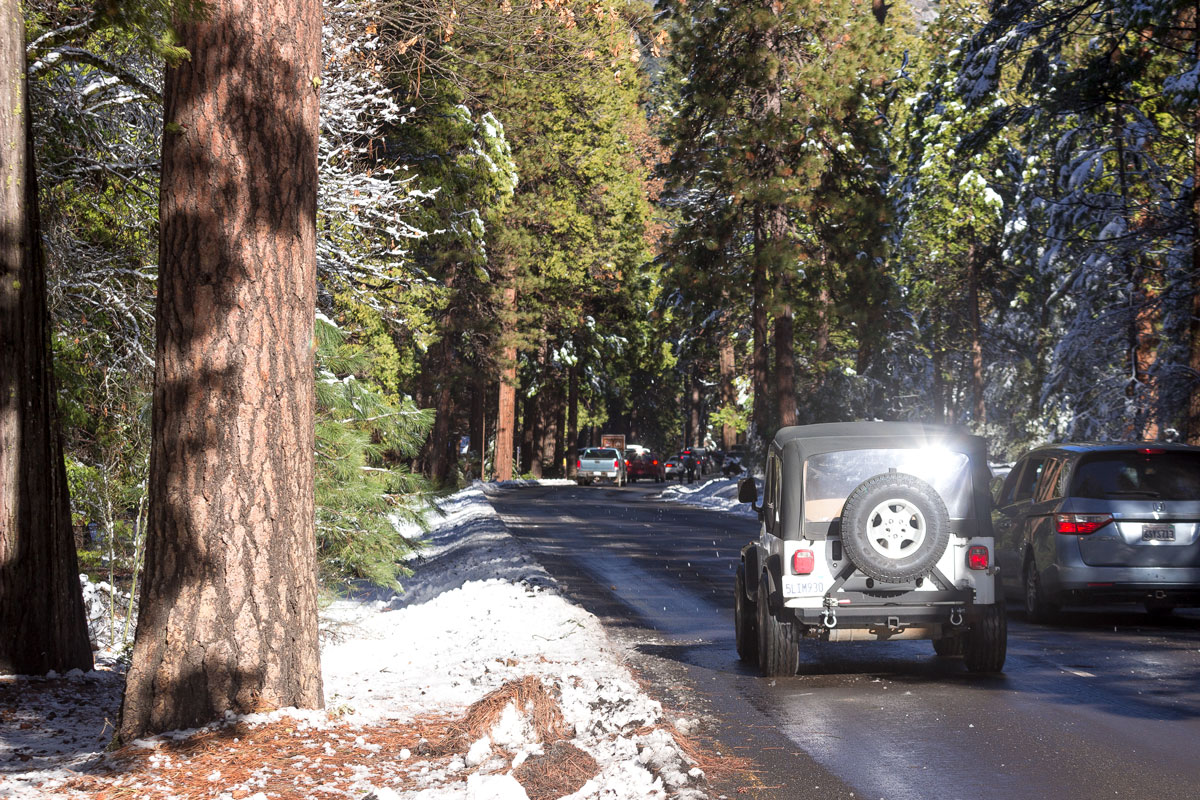
When you think you’ve seen everything in Yosemite, suddenly a landscape emerges that makes it seem like you hadn’t seen anything before.

Mind-blowing.

Such beauty cannot exist on its own; it must be a scenery.

The final chord emerges from behind the trees as a waterfall.

Holy saints, a waterfall with a rainbow!
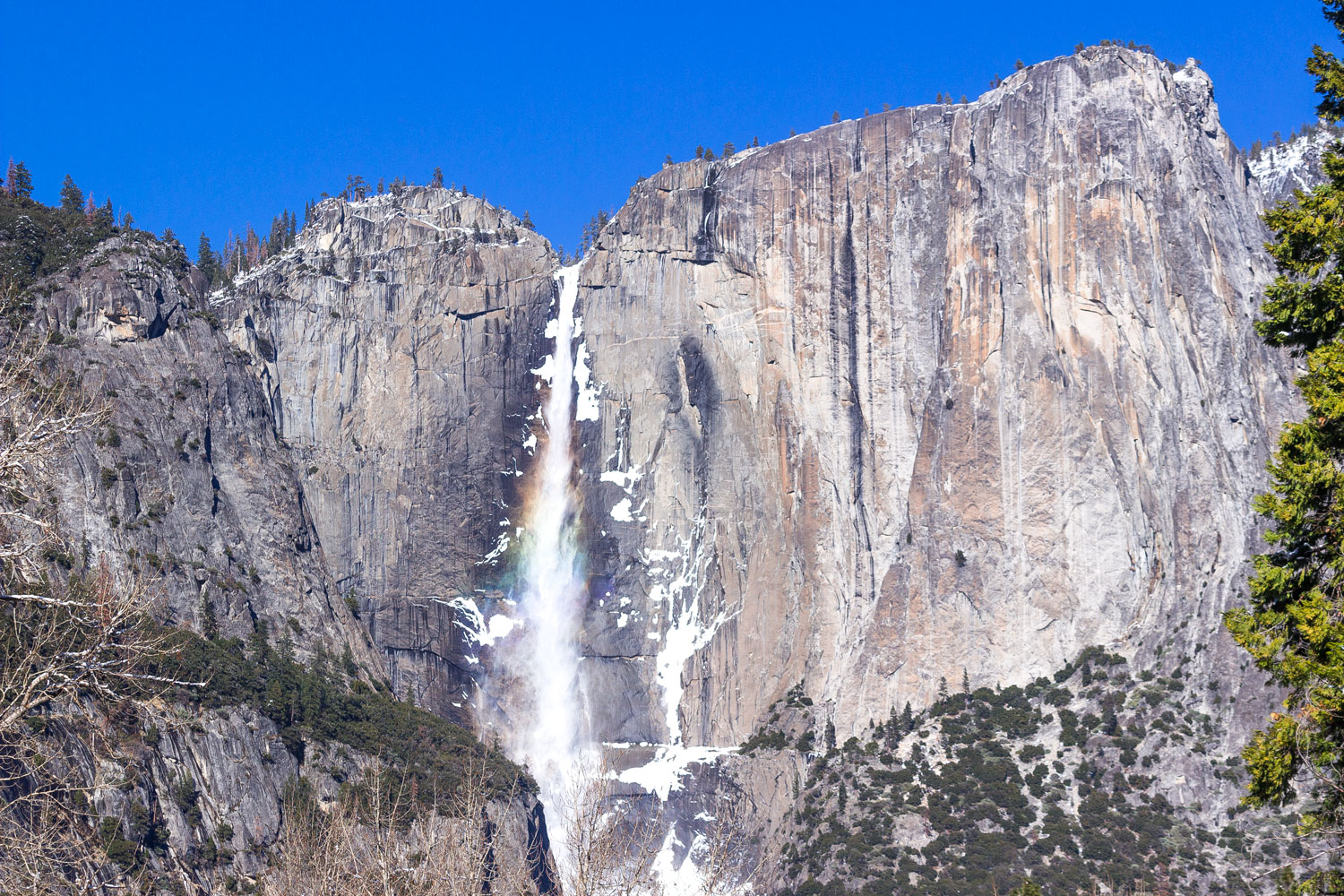
Somewhere in Saudi Arabia, an Arab prince exploded out of envy.
But that’s not all. There is another waterfall in the park called “Horse Tail.” For several days at the end of February, during sunset, the waterfall is illuminated at such an angle that it appears as if lava is flowing from the mountains.
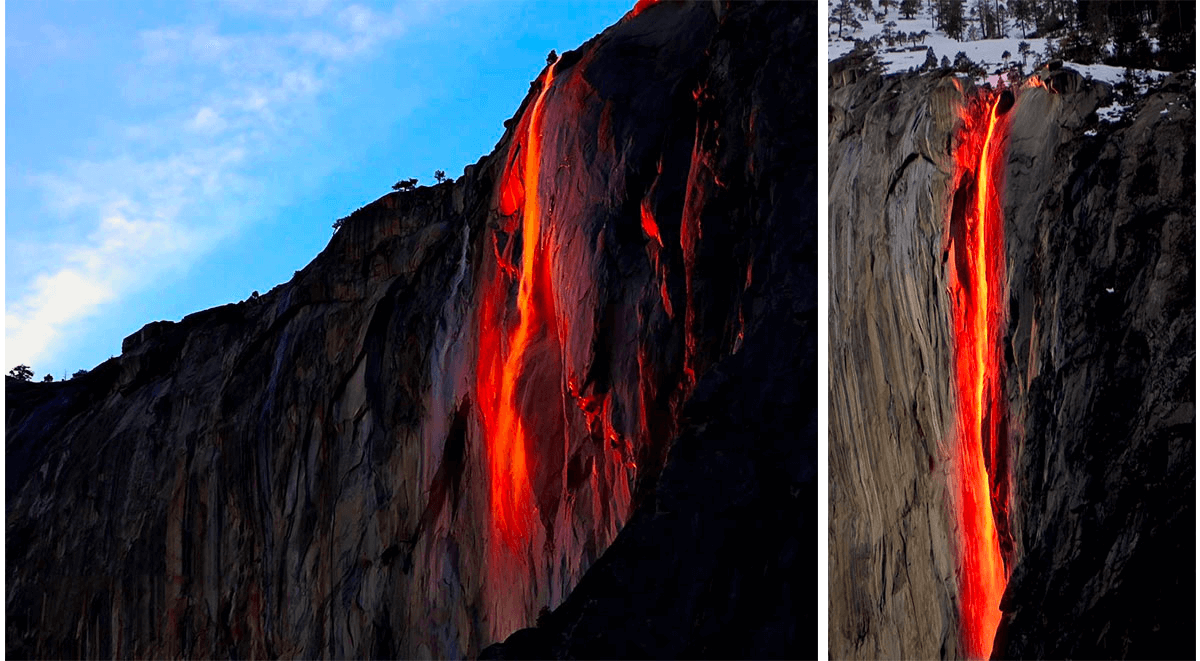
⁂
It is cold and snowy in Yosemite. The roads are thawing quickly, but there is a risk of them getting snowed in at any moment. Putting on winter tires is not an option in such conditions, so motorists are putting chains on their wheels.

Mountain road above the park.

Another small waterfall.
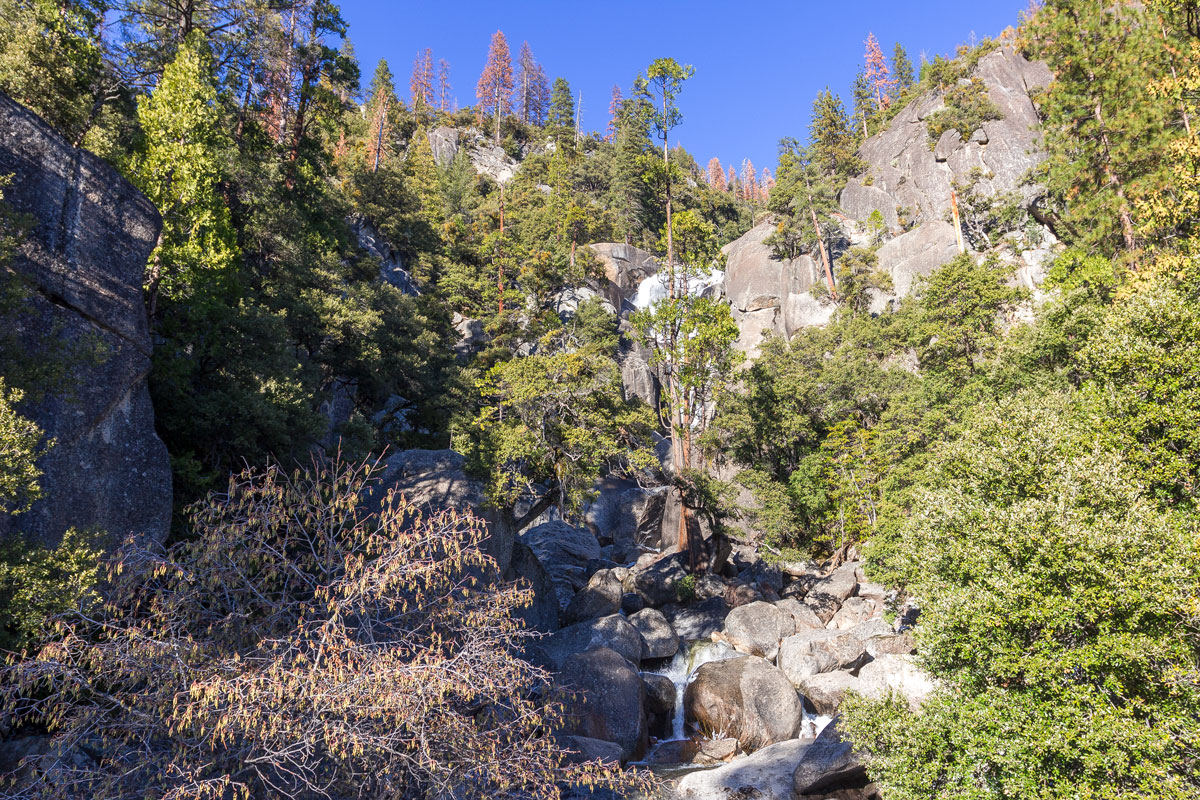
Yosemite Valley.

Usually, the roads in the park are open, and you can drive somewhere near the top of El Capitan. But this time, they announced snowdrifts and closed the passage.
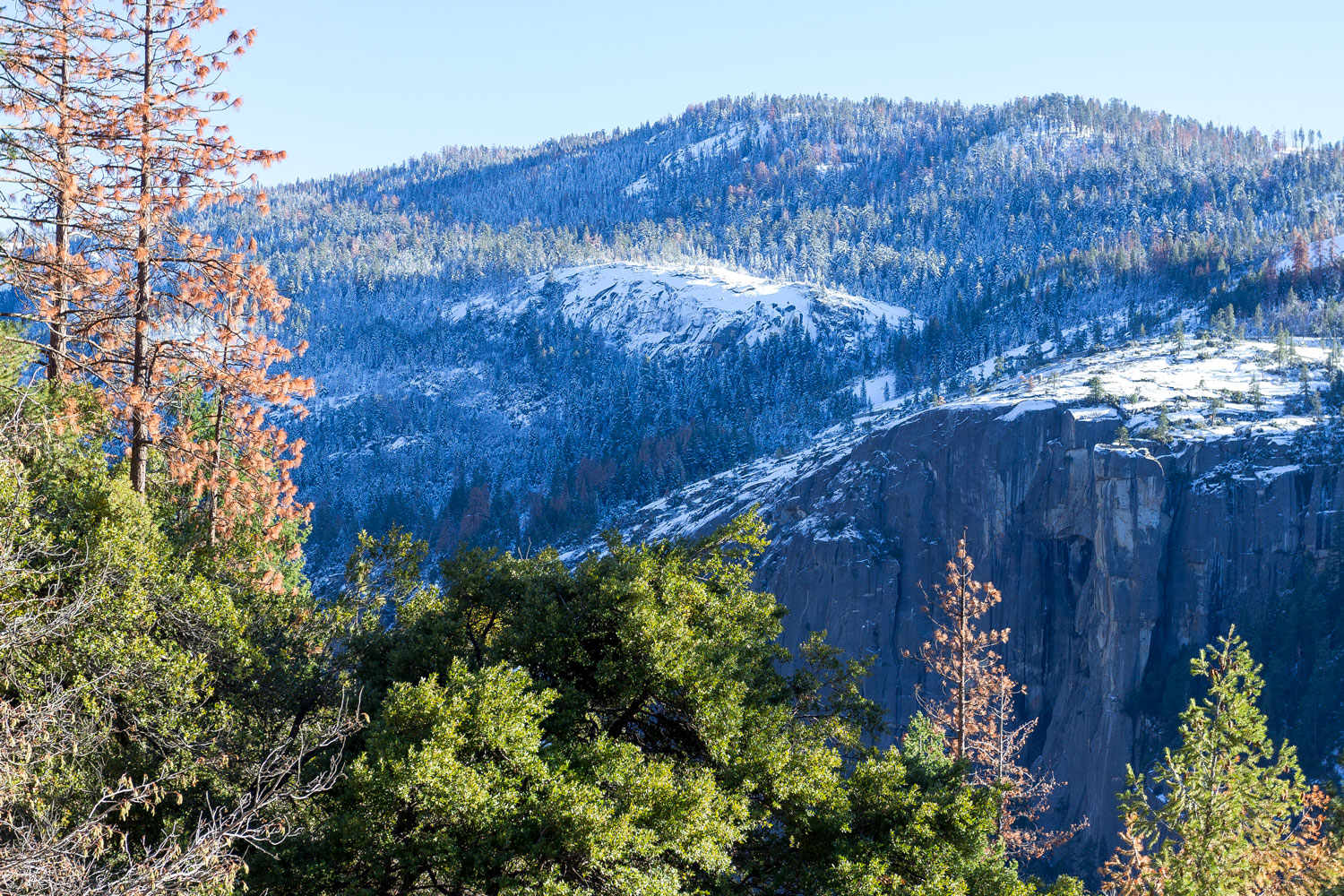
Fortunately, we managed to get out of Yosemite and reach the nearest motel. This is not always possible as they can close the road. There are no lights on the roads, just a wild forest and snow around. The highway winds through the mountains, making it very difficult to drive.
The motel is located in the middle of this forest. There is no internet or even regular phone signal throughout Yosemite Valley. The motel didn’t have it either. There was only a landline telephone, and access to the internet was provided on a first-come, first-served basis at a lonely table with an old computer next to the reception desk.

And you say San Francisco. It’s a Siberia!


